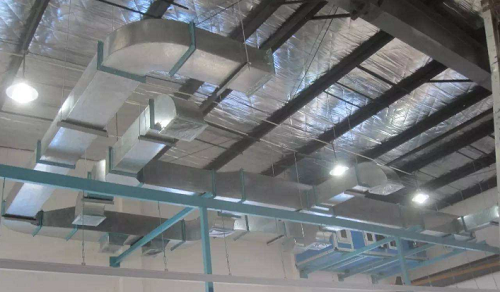

SEARCH
In buildings, ventilation ducts need to have certain fire resistance, because in case of fire, if ventilation ducts do not have fire protection, it will cause the spread and expansion of the fire. Therefore, it is very important to use refractory materials in smoke control duct.
The fire resistance limit of smoke exhaust duct depends on the building design code and production standard and other factors. According to the provisions of the Building Fire Code (GB 50016), the fire resistance limit of the smoke exhaust duct should not be less than 2 hours or 3 hours. This is to allow the smoke and harmful gases in the building to be discharged as soon as possible when the fire occurs, to ensure the safety of personnel escape, and to effectively control the spread of the fire. Under normal circumstances, the higher the fire resistance limit of smoke exhaust duct, the better its fire performance.

Fireproof materials for smoke exhaust ducts generally need to have fire prevention, heat insulation, high temperature resistance and other properties. According to different use environments and needs, the following fireproof materials can be selected:
Mineral wool board is a kind of inorganic nonmetallic composite material, which has excellent fire and heat insulation properties. Expansion type rock wool board can be expanded at high temperature, in the process of expansion to produce a lot of water vapor, can effectively heat insulation and fire prevention. Perlite plate has better heat insulation performance, and not easy to burn, can effectively meet the requirements of fire prevention. Refractory calcium silicate board has good fire and heat insulation properties, can be used in high temperature occasions. Ceramic fiber felt also has better heat insulation and fire performance, but the relative price is higher.
It should be noted that different fireproof materials are suitable for different use environments and needs, and appropriate materials should be selected according to the actual situation.